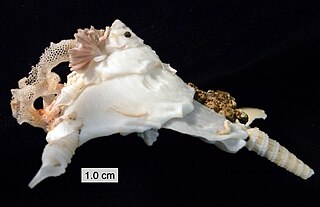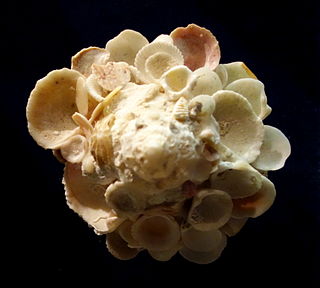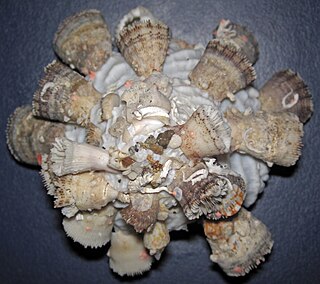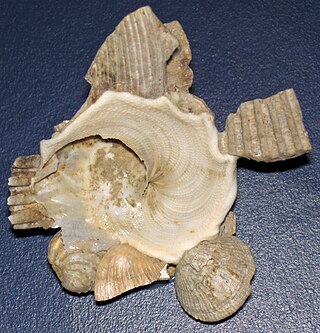
Turbonillinae is a subfamily of mostly minute parasitic sea snails, marine gastropod molluscs in the family Pyramidellidae, the pyrams and their allies.

Xenophoridae, commonly called carrier shells, is a family of medium-sized to large sea snails, marine gastropod mollusks in the clade Littorinimorpha.

Xenophora, commonly called carrier shells, is a genus of medium-sized to large sea snails, marine gastropod mollusks in the family Xenophoridae, the carrier snails or carrier shells. The genus Xenophora is the type genus of the family Xenophoridae.

Vermetus triquetrus is a species of sea snail, a marine gastropod mollusk in the family Vermetidae, the worm snails or worm shells.

Onustus caribaeus is a species of large sea snail, a marine gastropod mollusk in the family Xenophoridae, the carrier shells.

Stellaria chinensis is a species of large sea snail, a marine gastropod mollusk in the family Xenophoridae, the carrier shells.

Stellaria solaris, common name the sun carrier shell, is a species of large sea snail, a marine gastropod mollusk in the family Xenophoridae, the carrier shells.

Xenophora flindersi is a species of large sea snail, a marine gastropod mollusk in the family Xenophoridae, the carrier shells.

Xenophora cerea is a species of large sea snail, a marine gastropod mollusc in the family Xenophoridae, the carrier shells.

Xenophora conchyliophora is a species of medium-sized to large sea snail, a marine gastropod mollusk in the family Xenophoridae, the carrier shells.

Xenophora corrugata is a species of large sea snail, a marine gastropod mollusk in the family Xenophoridae, the carrier shells.

Xenophora granulosa is a species of large sea snail, a marine gastropod mollusk in the family Xenophoridae, the carrier shells.

Xenophora japonica is a species of large sea snail, a marine gastropod mollusc in the family Xenophoridae, the carrier shells.

Xenophora mekranensis is a species of large sea snail, a marine gastropod mollusc in the family Xenophoridae, the carrier shells.

Xenophora pallidula, the pallid carrier shell, is a species of large sea snail, a marine gastropod mollusc in the family Xenophoridae, the carrier shells.

Xenophora solarioides is a species of large sea snail, a marine gastropod mollusc in the family Xenophoridae, the carrier shells.

Xenophora tenuis is a species of large sea snail, a marine gastropod mollusk in the family Xenophoridae, the carrier shells.

Onustus is a genus of large sea snails, marine gastropod mollusks in the family Xenophoridae, the carrier shells.

Odostomia licina is a species of sea snail, a marine gastropod mollusc in the family Pyramidellidae, the pyrams and their allies.

Babelomurex pacei is a species of sea snail, a marine gastropod mollusk, in the family Muricidae, the murex snails or rock snails.



















